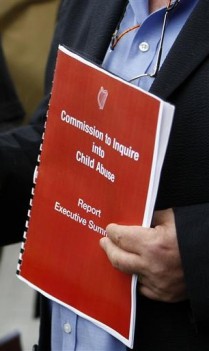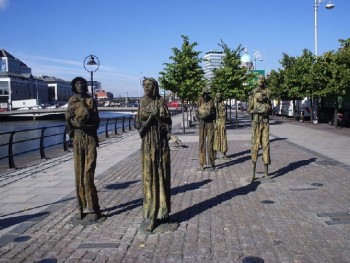Ethiopian Review
January 28, 2010
http://www.ethiopianreview.com/news/17867
 |
| The Ryan report into child abuse, 20 May 2009/Cathal McNaughton |
One of the healing measures suggested when Ireland’s Catholic clerical sex scandals shocked the country last year was a proposal to erect a monument in Dublin to all the youths abused for decades at schools and orphanages run by religious orders that looked the other way. The idea, proposed by the government’s Ryan report last May, won so much support that half a million euros were earmarked for the project. The government appointed a group to consider what the Irish Times called “the most difficult public art commission in the history of the state.”
It’s just become even more difficult because one group of clerical abuse victims has now said the funds should instead be donated to victims of the Haiti earthquake. The gesture would “genuinely mean more to victims of clerical abuse than a piece of stone on O’Connell Street,” the victims’ group Right of Place said last week at a meeting with Prime Minister Brian Cowen. O’Connell Street is Dublin’s main thoroughfare, an ideal place for any memorial.
Others disagree.
Christine Buckley, who works at the Aislinn Centre to support victims, said she recognised the deep suffering of Haitian people. But Ireland, whose government and citizens have already contributed millions in aid to Haiti, should still be able to afford just over 3 euros per each child affected by abuse, she said.
The Ryan commission that issued the shocking report about abuse committed throughout much of the past century recommended that the monument should have the words of an 1999 government apology inscribed on it:
 |
| Famine memorial sculpture in Dublin, 8 Sept 2006/Sebb |
“On behalf of the State and all citizens of the State, the Government wishes to make a sincere and overdue apology to the victims of childhood abuse for our collective failure to intervene, to detect their pain, to come to their rescue .”
Beyond that, it is unclear what the monument, if built, would look like. The Irish Times said in November it should be “less like an official war monument and more like a Holocaust memorial,” adding that it had to be “dignified and angry, beautiful and raw, defiant and ashamed.”
One precedent could be the Famine Memorial statues on the banks of Dublin’s River Liffey, which depict a group of emaciated people apparently straining to reach a ship that would take them from Dublin to America in the 1840s.
“I can’t say what it’s going to be like,” Buckley told Reuters. “(But) the state can afford to spend 3 euros on each of us.”
The church has made shamed apologies for the abuse published in the Ryan report and in a second inquiry into how Roman Catholic archbishops obsessively covered up widespread sexual abuse of children by priests until the 1990s, findings which were released in November. Some bishops have resigned over the latest scandal but it has emerged in the past week that church leaders were far from united in their response to the revelations.
The Irish Catholic newspaper published remarks from a letter sent from one bishop criticising Dublin Archbishop Diarmuid Martin — who has taken the initiative in admitting faults and pushing for change — for not standing by his priests during the controversy.
“Your criticism was unfair,” Bishop Dermot O’Mahony was quoted as telling Martin, who was appointed to the Dublin post in 2003 after years in Rome and in the Vatican diplomatic service. “You were out of the diocese for 31 years and had no idea how traumatic it was for those of us who had to deal with allegations without protocols or guidelines or experience in the matter of child sexual abuse.”
Any original material on these pages is copyright © BishopAccountability.org 2004. Reproduce freely with attribution.